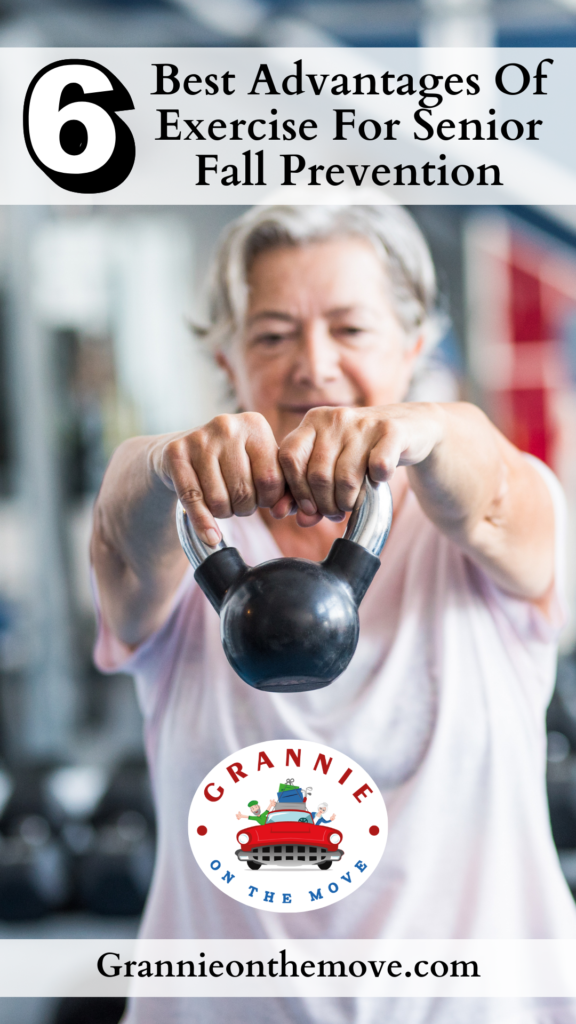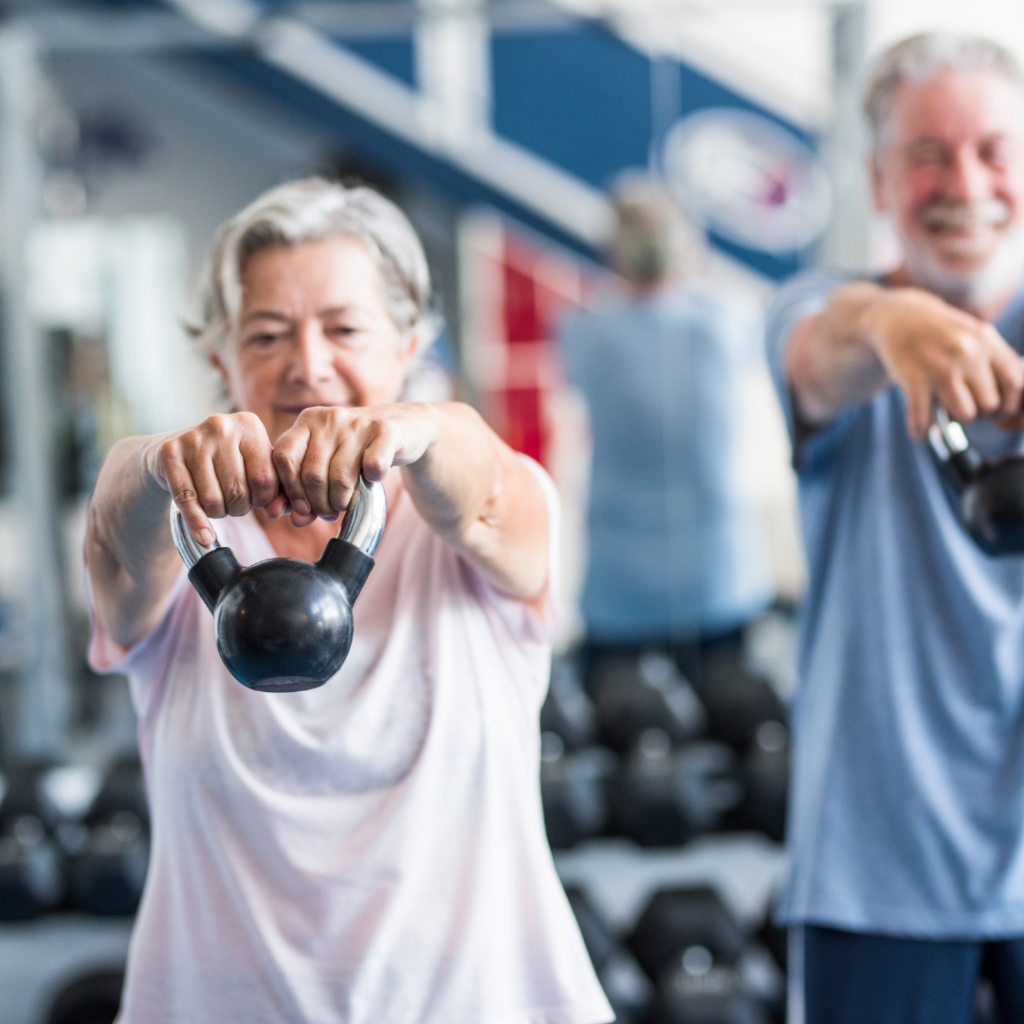Maintaining balance and avoiding falls becomes increasingly critical as we age to preserve independence and quality of life. Exercise, an often-underestimated ally in senior fall prevention, offers many benefits that can significantly diminish the risk of falls and related injuries.
Our blog post will explore the six best advantages of incorporating regular exercise into your daily routine as a powerful strategy for senior fall prevention. Let’s delve into how staying active can keep you or your loved ones safer and steadier on their feet.
Exercise as a Vital Tool for Senior Fall Prevention
According to the CDC (Center for Disease Control), 36 million older adults report falling each year. It’s concerning to know that falls are a significant cause of serious injury in older people. Unfortunately, one out of every five falls results in severe harm. We must ensure that we take every necessary precaution to prevent such incidents and keep our older relatives and loved ones safe.
The good news is that there is less risk of falling and related injuries for seniors who exercise regularly.
Now that we’ve set the stage for the importance of exercise in senior fall prevention let’s dive into the specific advantages. These points will elucidate exercise’s role in keeping our elderly loved ones safe, steady, and confident in their daily activities. From enhancing muscle strength to boosting mental health, exercise is essential to a comprehensive strategy to mitigate fall risks.
So, without further ado, here are the six best advantages of exercise for senior fall prevention.
6 Advantages of Exercise for Senior Fall Prevention
1: Improved Muscle Strength and Coordination
While improving muscle tone and strength training doesn’t prevent falling entirely, it can significantly reduce the risk of fall-related injuries and the damage a fall causes. Stronger muscles help an individual get up faster and with less difficulty when they do tumble.
Physical activity helps improve overall balance and coordination, making falls less likely by strengthening the critical muscles for maintaining stability. With regular exercise, seniors can develop better muscle control and agility, which are essential for preventing falls.
2: Increased Flexibility and Range of Motion
Over time, our muscles lose flexibility and become stiffer, making it more challenging to perform daily activities such as bending over or reaching high shelves.
Exercise can help combat these limitations by increasing flexibility and range of motion and reducing stiffness. Improved flexibility also allows balance and coordination, making it essential to senior fall prevention.
Exercises such as Tai Chi are designed to enhance flexibility, range of motion, and balance. Tai Chi, often touted as “meditation in motion,” is a low-impact, slow-motion exercise that requires you to shift your weight gradually and smoothly from one foot to the other, helping to strengthen leg muscles and improve coordination.
As per a recent study, seniors who practiced Tai Chi were nearly 50% less likely to experience a fall. Seniors can significantly enhance their balance and flexibility by including exercises like Tai Chi in regular workout routines, contributing to effective injury prevention.
3: Enhanced Cognitive Function
Physical activity can positively impact all older persons’ cognitive function and mental health. Exercise stimulates the brain by increasing blood flow and oxygen supply, which can improve decision-making skills, memory, and overall cognitive functioning.
With better mental clarity and focus, seniors are more likely to be mindful of their surroundings and take necessary precautions to prevent falls.
4: Reduced Risk of Chronic Diseases
Regular exercise is not only crucial for fall prevention but also has a significant impact on reducing the risk of chronic diseases such as osteoporosis, arthritis, and heart disease. These conditions can weaken the body and make it more susceptible to falls.
By incorporating exercise into their daily routine, seniors can strengthen their bones and joints, improve heart health, and reduce their risk of chronic diseases.
5: Improved Mood and Mental Well-being
Scientific studies have proven that exercise releases endorphins, boosting mood and enhancing mental well-being. Seniors who engage in regular physical activity are more likely to have a positive outlook on life, reducing stress and anxiety that can contribute to falls.
It is significant to note that engaging in physical exercise is instrumental in enhancing one’s physical health and affords an avenue for social interaction.
6: Greater Independence and Confidence
Regular exercise not only strengthens the body but also boosts independence and confidence in seniors, playing a pivotal role in healthy aging. Many seniors develop a fear of falling due to an earlier fall or observing others fall, which can lead to decreased activity levels.
However, this fear can ironically increase fall risk because of the reduced muscle strength and coordination from becoming less active.
Regular exercise can help overcome this fear, as it aids in improving strength, balance, and coordination, which are essential factors in preventing falls and serious injuries. Over time, seniors who exercise regularly will feel more confident in their ability to move safely and independently, reducing fear and loss of independence.
The increased confidence can also motivate seniors to stay active and fearlessly engage in their daily activities, contributing to their overall well-being and quality of life.
How Family Members Can Help
Family members play a crucial role in guaranteeing the well-being of their elderly loved ones.
One way to actively participate in senior fall prevention is by promoting and facilitating regular risk assessments. Such assessments (also known as a fall risk screening), conducted by a health care provider, evaluate a number of risk factors for older adults, including health conditions, medications, vision, gait, and home environment. These comprehensive evaluations help in implementing customized strategies to mitigate fall risks.
In addition to risk assessments, encouraging participation in fall prevention programs can be highly beneficial. Often led by health professionals and community members, these programs focus on exercise and balance training, educating seniors about fall risks and safe movement, and sometimes include diet recommendations to enhance bone health. Participation in a falls prevention program can significantly reduce the incidence of unintentional falls among seniors and empower them with knowledge and skills for safer mobility.
Lastly, incorporating assistive devices like grab bars in homes is a practical and effective way to reduce fall risks. Installing these bars in strategic locations such as bathrooms, hallways, and staircases can provide seniors extra support while moving around, making their living spaces safer and more accessible. Other helpful modifications include non-slip mats, adequate lighting, and ensuring a clutter-free, clear path for walking around the home.
Let’s reflect on what we’ve learned…
In conclusion, integrating a regular exercise program brings numerous benefits, not just for the health of older adults, but for senior fall prevention. From increasing strength, flexibility, and agility to enhancing cognitive function and mental well-being, exercise is pivotal in reducing the risk of falls among older people.
Coupled with regular risk assessments from a healthcare provider, participation in fall prevention programs, and adopting practical home modifications, these fall prevention strategies can significantly enhance seniors’ safety, independence, and quality of life. Remember, it’s never too late to implement these strategies and make a positive change.
If you or your loved ones need more guidance on senior fall prevention, don’t hesitate to contact us at Grannie On The Move. Our dedicated senior care advisors are here to provide personalized advice and support. Let’s work together to ensure the well-being of our elderly loved ones. Contact us today for more information.


